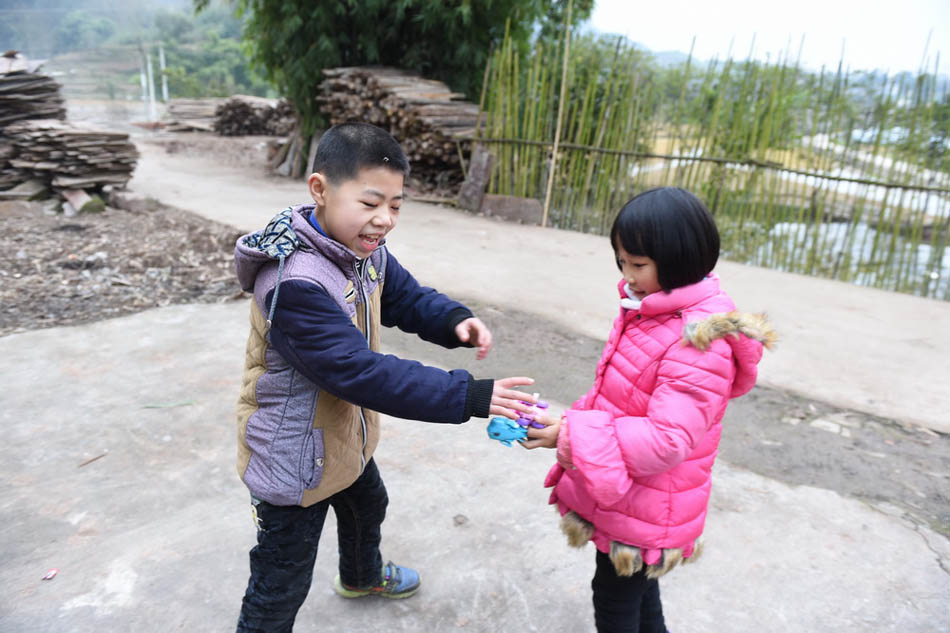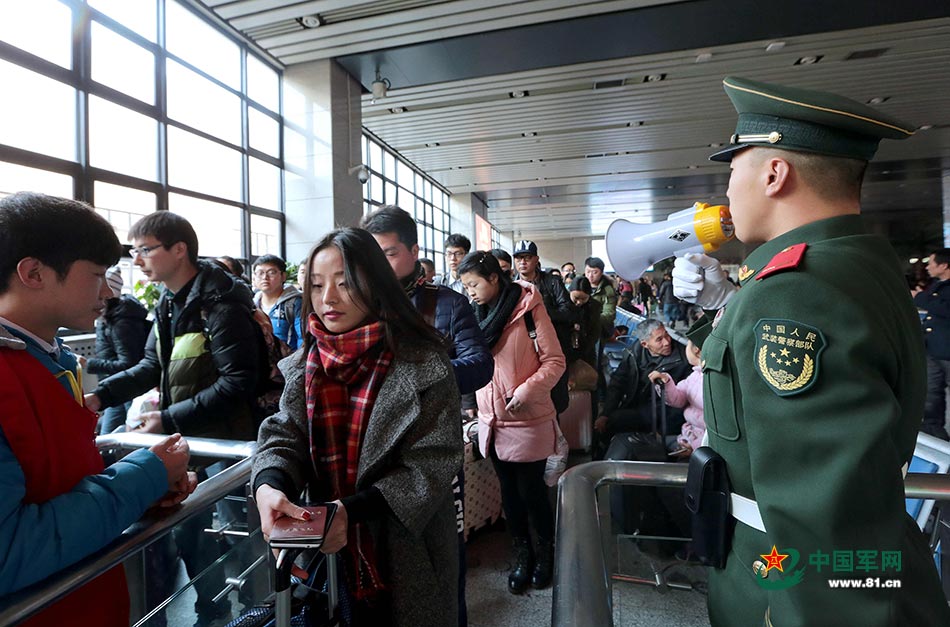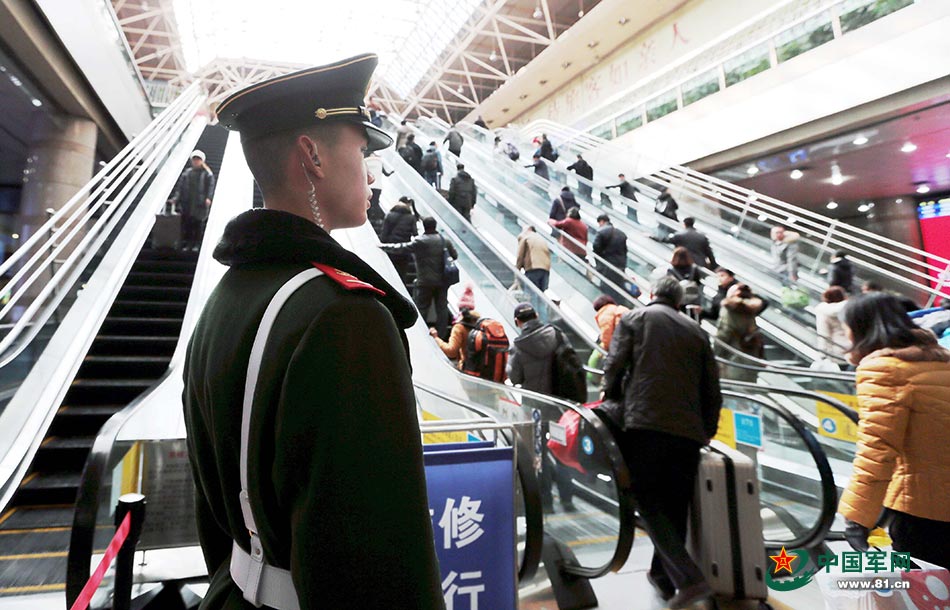How China handles the world's largest annual human migration
January 13, 2017, Friday |
ONLINE EDITION
IT is time to go home! Starting Friday, hundreds of millions of Chinese who study or work in faraway cities are heading back home to their parents to usher in the Chinese lunar new year, or the Year of the Rooster.
The lunar new year is the most important holiday in China. Office workers usually get a week-long holiday, laborers down their tools for about two weeks, and students enjoy an even longer winter break. Going home has, for decades, been the theme of the season.
A sweet moment for those going home, the annual travel peaks at this time -- known as Chunyun or literally the Spring Festival travel -- and puts a huge stress test on the country's transport system. According to the Ministry of Transport, a record 2.98 billion trips will be made during the 40-day period, up 2.2 percent from last year.
Here are some facts on how people travel, and how China manages this tremendous human migration.
-- Movement
The tides of Chunyun typically have two peaks. As this year's Spring Festival falls on Jan. 28, the peaks are expected on Jan. 25 when people leave for home and on Feb. 2 when they return for work.
College students and 270 million migrant workers are the main travelers.
As for the direction of the flow, people generally move from the country's booming eastern and southern coasts, as well as Beijing, to inland cities, towns, and villages before the new year. A reverse trend occurs about a week after the holiday.
Travel by road, rail, air, and sea represents 84.6 percent, 12 percent, 2 percent, and 1.4 percent respectively of the total trips, according to the Ministry of Transport estimates.
"This year, we are facing greater pressure as Chunyun starts earlier," said Zhao Chenxin, a spokesman for the National Development and Reform Commission. "However, we will harness big data and mobile internet technologies to offer better services."
-- High-speed Trains
Although more people travel by bus, the strain has been acutely felt by the railway system -- the most affordable and practical mode of transport for long-distance travel. A total of 356 million train trips will be made during this year's travel rush.
China Railway Corporation says 3,570 pairs of trains are in service and an additional 1,264 pairs will be added as temporary support.
Since the last Chunyun, 3,200 kilometers of new rail tracks have been put to use.
More than 65 percent of train trips are being served by high-speed trains that can run up to more than 300 kilometers per hour.
China developed the world's largest high-speed rail network in just a decade, halving travel time for otherwise gruesome cross-country trips. The high-speed rail line has reached 20,000 kilometers and will add 10,000 kilometers more by 2020, linking more than 80 percent of China's big cities.
-- Online Ticketing
With the development of fast trains, tickets can now be booked in person, on the phone, or more commonly through websites and mobile phone apps.
People can book tickets online about 30 days before they travel.
Most of the booking is done via the railway company's official website
www.12306.com. Though the site crashed under enormous traffic in the first year it was launched, improved technical support has enabled it to withstand subsequent tests.
This has put an end to the typical occurance of migrant worker armies camping out in front of major stations' ticketing halls as seen in past Chunyuns.
As travelers are required to match their identification cards with each online purchase, scalpers who used to make a killing during Chunyun have been largely forced out of business.
-- Facial Recognition Check-in
To fast-track check-in, some stations have started using facial recognition technology to verify passenger identities.
Beijing Western Railway Station, for example, set up six automatic check-in lanes. Passengers insert their ticket and ID card into a machine and have a photo taken for verification. The whole process takes less than five seconds.
This technology has smoothed the check-in and prevented the practice of boarding trains with someone else's ticket.
A staffer at the station says about 665,500 passengers have taken the automatic lanes since they became operational in late Novmber 2016.
-- Car Sharing
Even for many who take the train, they often need to switch to roads to reach homes in faraway towns and villages. Buses and private vehicles have a key role to play.
As the sharing economy gains the trust of a growing number of Chinese, the country's largest online car-hailing company Didi Chuxing says travelers can make good use of its car-pooling service that allows those going home to take a ride in private cars traveling towards the same direction.
The company estimates around 8.4 million people will make use of the service during Chunyun. Liu Qing, president of the company, said that inter-city car-pooling could help ease the strain on public transport.
-- Airplanes
Air travel is the last resort, for the privileged.
Tickets during the Chunyun travel rush are generally sold without discounts.
Airlines are ramping up their capacity, as the number of passengers is expected to grow by 10 percent to hit 58.3 million.
All four major airlines -- Air China, China Southern, China Eastern, and Hainan Airlines -- plan to add flights while China United Airlines opened two new routes.
For the airlines, Chunyun has a new dimension -- overseas travel. All are geared up to carry more Chinese taking holidays abroad as more families can afford such trips.
.






















